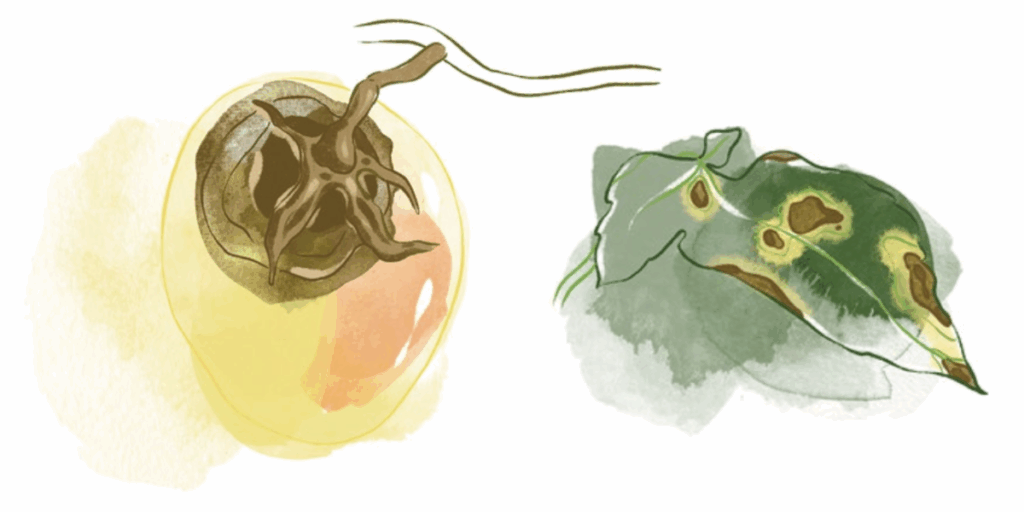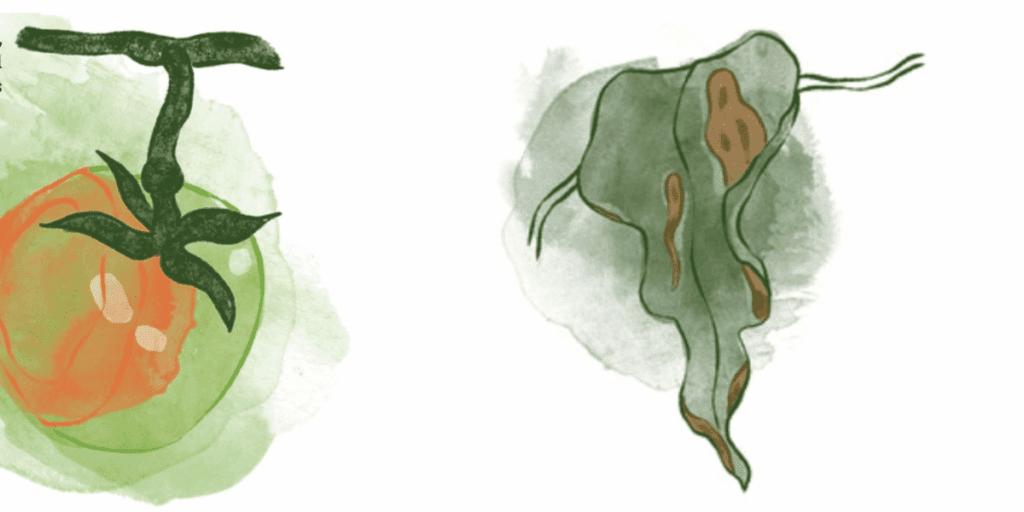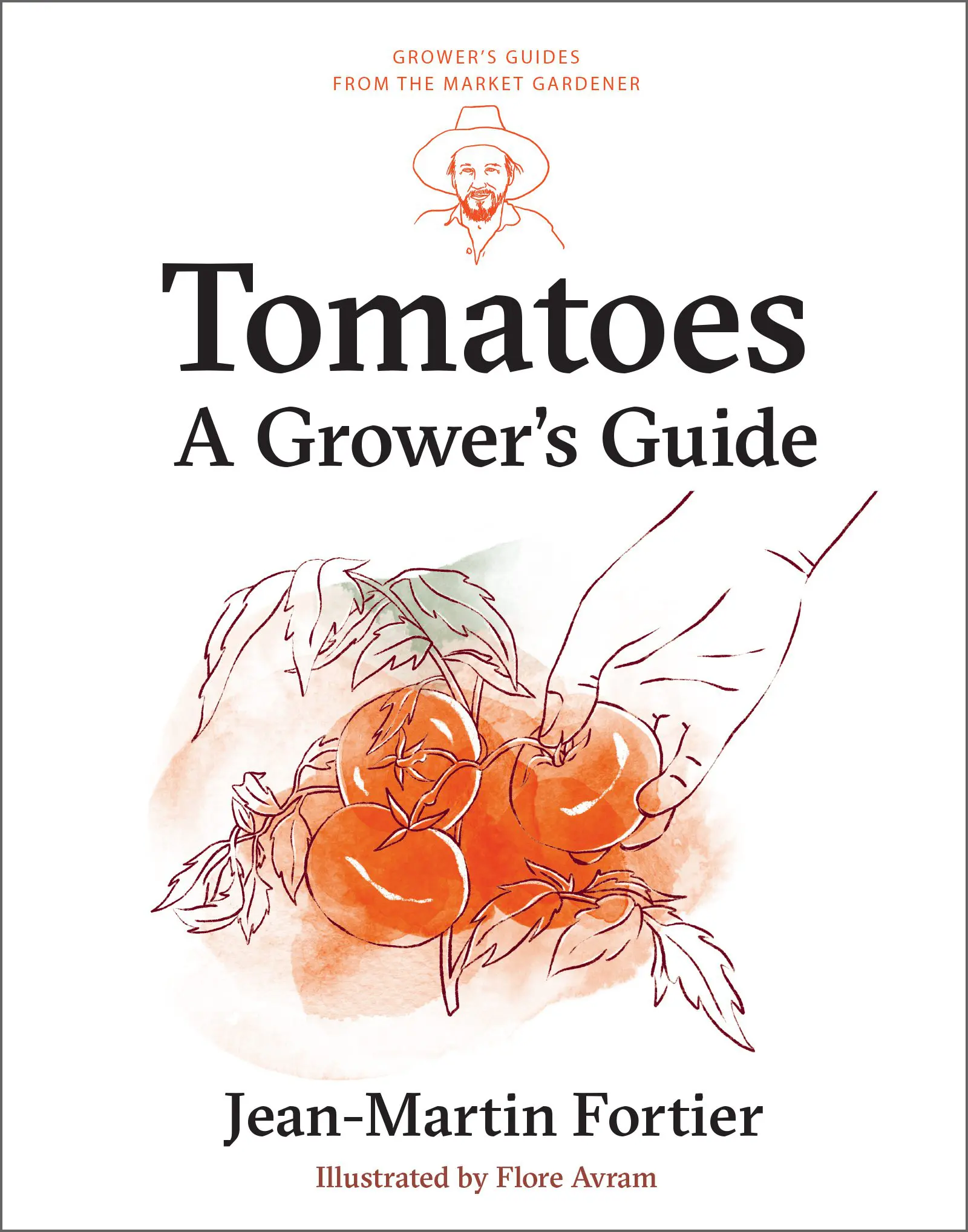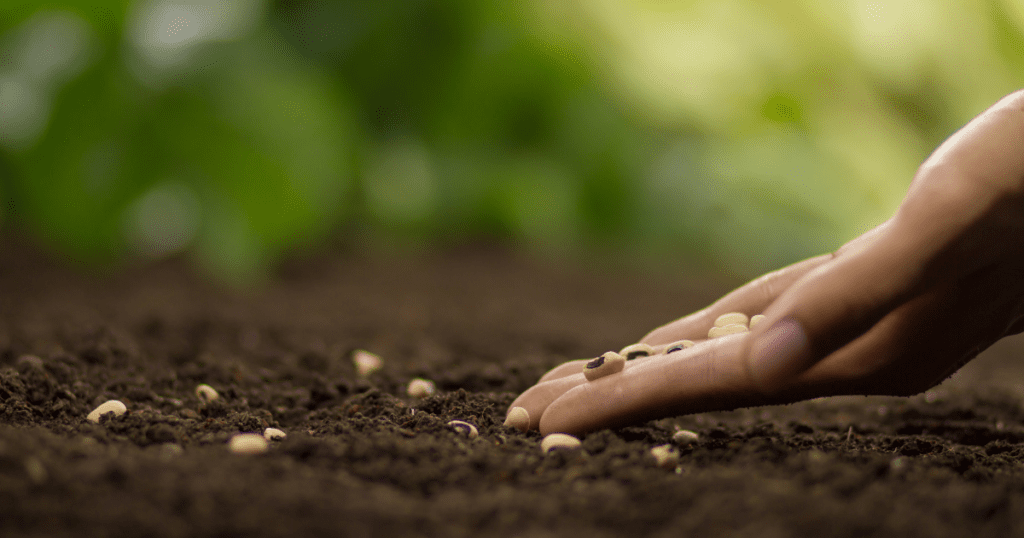
Tomatoes might be garden favorites, but they’ve got plenty of enemies lurking nearby! In Tomatoes: A Grower’s Guide From The Market Gardener, Jean-Martin Fortier breaks down the most common pests and diseases that can wreak havoc on your crop—and how to fight back naturally. From classic foes like blight and powdery mildew, to newer threats like ToBRFV, this section is packed with easy, organic tips to help you keep your tomato plants healthy, happy, and thriving.
Tomato diseases are caused by fungi or viruses, which are often transmitted by parasitic insects.
Downy Mildew (late blight)

→ Symptoms
Of all the fungal diseases affecting tomatoes, downy mildew, also called late blight, is the most widely known. It is caused by Phytophthora infestans, which overwinters in the leaves and stems and can also be present in the soil. It is highly contagious and is especially prevalent at the end of the season and in wet summers. It spreads when temperatures are cool, between 59°F and 77°F (15°–25°C), and humidity is high. Plants hit by downy mildew develop irregular brown spots on foliage and young fruit, as well as gray fuzzy growth on the underside of leaves. When only partially affected, tomatoes are still edible after the damaged parts are removed.
→ Preventive Measures and Disease Control
Downy mildew is less likely to affect tomatoes grown in tunnels or greenhouses if there is good airflow around the plants and the soil is mulched. Similarly, you can reduce the risk of it developing by watering tomato plants at the base and not on the leaves, implementing a crop rotation, and clearing all plant debris from the soil. For cases of recurring downy mildew, you may opt for tomato varieties that are disease-resistant. As a preventive measure, you can apply a nettle or comfrey tea or even a garlic or horsetail decoction (concentrate). Spray affected plants with a copper sulfate solution.
Early Blight

→ Symptoms
While early blight is often mistaken for downy mildew (late blight), it is much more harmful. It is caused by fungal species belonging to the Alternaria genus, including A. solani, A. alternata, and A. tomatophila, that can damage tomato plants. It typically occurs from July to November, during hot and humid stretches, especially in wet weather. It presents as well-defined dark brown spots with concentric rings, first in the leaves closest to the ground before eventually spreading to the entire plant. Once affected, tomatoes rot quickly. As soon as symptoms appear, cut off and burn the infected parts of the plant.
→ Preventive Measures and Disease Control
To prevent early blight, mulching is a good practice, as are crop rotation and irrigation methods that water the base of the plant without wetting the foliage.
You can also spray plants with a lime milk solution to destroy any spores on the main stem. Another good prevention measure is to apply a decoction of garlic or horsetail through a foliar spray. Lastly, once spots appear, you can spray the plants with a copper sulfate solution.
Botrytis (gray mold)

→ Symptoms
This common disease is caused by the fungus Botrytis cinerea. It appears when humidity is high, temperatures are moderate, airflow around the plants is limited (especially in tunnels and greenhouses), and too much nitrogen was added in fertilization. It affects the entire plant, from the collar to the foliage, including stems and fruits. Affected foliage turns yellow, dries out, and drops; a gray fuzz develops on the flowers and fruits.
→ Preventive Measures and Disease Control
To prevent botrytis, you can limit nitrogen inputs, plant garlic within tomato rows, spray the base of each plant with lime milk, and apply a horsetail decoction (concentrate). To combat this fungus, the best treatment is a foliar spray with a sulfur-based solution.
Powdery Mildew

→ Symptoms
Powdery mildew is a fungal disease that appears as a white and powdery growth on the plant. It spreads quickly in the summer, when hot days follow cool, damp nights. Symptoms include wilting foliage, dropping young fruit, cracking in older fruits, and overall stunted plant growth. Affected parts of the plant should be removed and destroyed.
→ Preventive Measures and Disease Control
The simplest way to prevent the spread of powdery mildew is to increase the distance between plants and improve airflow, apply lime milk to the base of the plant, limit the amount of nitrogen in fertilizer inputs, and apply a horsetail or nettle tea. If contamination persists from one year to the next, a good solution is to opt for disease-resistant varieties. To control the disease, spray the plant with a sulfur-based solution.
Verticillium Wilt

→ Symptoms
Verticillium wilt is a disease caused by the fungus Verticillium dahliae, which prevents sap from circulating properly in tomato stems. It causes leaves to wilt, turn yellow, and fall off.
→ Preventive Measures and Disease Control
There is no cure for this disease. Therefore, you need to cut off and destroy damaged parts of the plant as soon as symptoms appear.
ToBRFV: An Emerging Virus!
A new disease has appeared in recent years: the tomato brown rugose fruit virus (ToBRFV). Affected tomatoes show yellow or brown spots, become rough, and can no longer be eaten. The virus causing this damage is transmitted through simple contact.
There is currently no treatment. At this time, however, only industrialized farms with large-scale monocultural practices have been affected. If ToBRFV is found in a crop, all plants in the affected area must be uprooted and destroyed.









